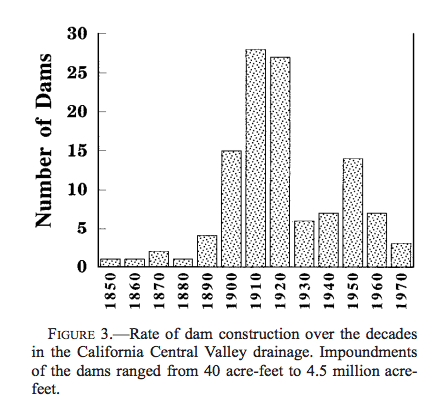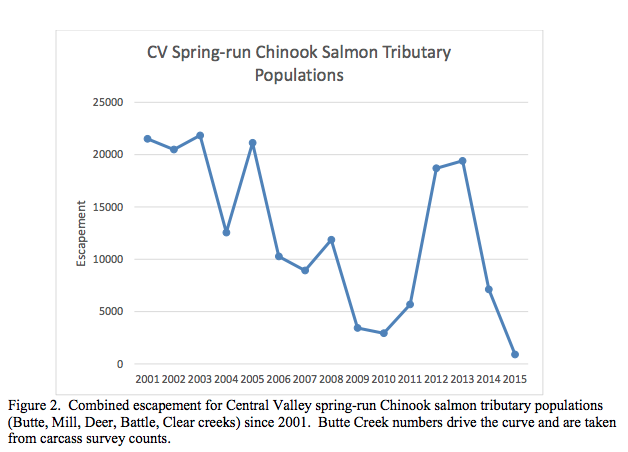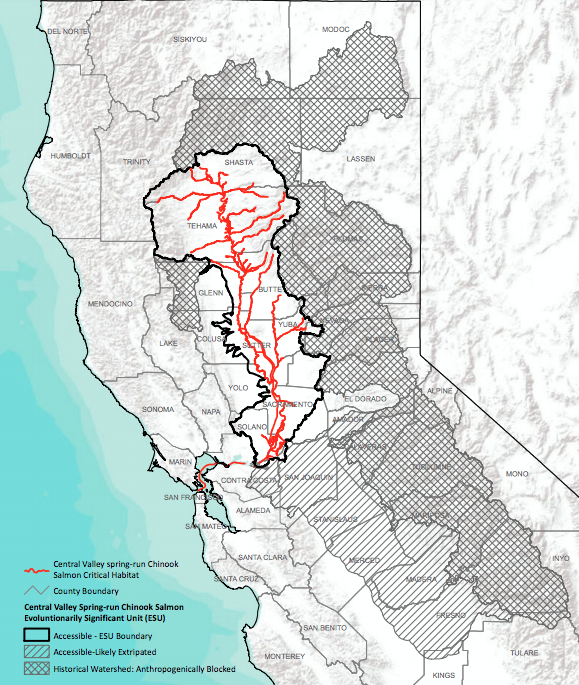Washington orcas seek fishy dessert in California; find mostly a fishless desert
Yesterday afternoon, endangered southern resident killer whales (SRKWs) were sighted in Monterey Bay, California. This was a very rare sighting of L pod members at the extreme southern end of their range. They haven’t been seen in Monterey Bay since 2011. Here’s what it looked like from the drone of Monterey Bay Whale Watch:
SRKWs have twice turned away from California in recent years, probably because they failed to find enough fish to warrant continuing their southward journey. In March 2015, L and K pods were sighted briefly north of Cape Mendocino but the track of L84 who carried a satellite tag did not continue further south that spring. There was a similar excursion into northern California on Jan 19, 2016 by K pod (inferred from the track of the satellite tag carried by K33), but again the orcas turned around.
Messages from orcas to Californians
This visit should be heralded by Californians as a clear indication that Chinook recovery may have worked a little bit in your State and should continue! This year the orcas decided it was worth going all the way to Monterey.
But the visit should also provide this more urgent message: California salmon are critical to the recovery of the SRKW population and the needs of orcas should be prioritized in ongoing efforts to recover salmon and manage water in the State. This winter and spring, the SRKWs continue to seek their preferred prey, Chinook salmon, all along the west coast of the continental U.S., just as they most likely have done for millennia (especially during the last glaciation when the Salish Sea was solid ice!).
We should understand this behavior as a clarion call for us all to work together to bring Pacific salmon back to west coast rivers. For L pod in particular, and likely K pod, too, it’s important to recover salmon not only in Washington and British Columbia, but also in Oregon and California. A good omen is that the latter States have abbreviations that combine to spell ORCA!
Long-lost memories of California Chinook
It’s a safe assumption that the wise matriarchs of L pod are expecting the amazing abundance of salmon that long-ago returned to the Sacramento and San Juaquin Rivers. These rivers formed the vast, fertile central valley of California and are fed by countless tributaries that drain the west side of Sierra Nevada mountain range. L pod’s southward search each winter-spring is probably led by the deep memories of L25 (aka “Ocean Sun”) who is estimated to be in her 90s. She could be remembering the California salmon run sizes of the 1930s!
Best estimates put the historic size of the Sacramento-San-Juaquin spring-run Chinook run at more than 600,000 fish in the late 1880s to 1940s (CDFW Status review, 1998). The relevant recovery plan states that after ~1940 dams had extirpated (driven to local extinction) the spring-run Chinook in the San Juaquin River and that the total spring run varied from 3,000 to 30,000 fish between 1970 and 2012. L25 likely witnessed Chinook runs on the continental shelf from Monterey Bay north that were almost 100x the size of modern returns (i.e. recent minima of a few thousand fish, or less) in an era when the dams that would devastate the runs were just beginning to be built!

Sadly, due to the onslaught of many kinds of human impacts over the last 200 years in California — within the central valley, across the San Francisco Bay, and along the coastline — there aren’t many salmon left in the rivers. A June 2018 assessment by NOAA of salmon stocks that are most important to SRKWs, highlights the threatened Central Valley (CV) Spring-run Chinook ESU of the Sacramento River and its tributaries as 13th most important overall, and the 5th most-important of the spring run-type. But the latest status review (2016) provided this recent depressing 15-year trend in listed Chinook escapement (the number of fish that return to their spawning grounds, “escaping” various fisheries and other sources of mortality) —

— and concluded with these ominous sentences:
In addition to the low adult returns observed in 2015, juveniles hatched in
the drought years of 2013 through 2015 are expected to produce low adult returns in 2016 through 2018. Based on the severity of the drought and the low escapements as well as increased
pre-spawn mortality in Butte, Mill, and Deer creeks in 2015, there is concern that these CV spring-run Chinook salmon strongholds will deteriorate into high extinction risk in the coming
years based on the population size or rate of decline criteria.
The winter-run of Chinook in the same basin is in even more dire straits… And it all makes sense when you look at the current state of the California Chinook’s previously-magnificent habitats:

As of now, Sacramento Chinook have lost some 70% of their original spawning habitat.
On top of that, water has always been in very high demand in California; it’s such a scarce resource that large parts of the San Juaquin River have been pumped dry for decades and cities like San Francisco are being forced to fight in court for their historic water rights or invest in conservation technologies.
Let the orcas remind us to recover salmon, despite the complexities in CA, OR, WA, and BC
Recovering Pacific salmon, particularly Chinook, in California will be big challenge for us humans, just as it’s a grand challenge in Washington State. Perhaps together we can find the will and means to save both the orcas which connect us through their migrations, and the salmon that they seek year-round.
Take action this spring, wherever you live along the west coast. Go watch Artifishal (screenings start this month!). Support a salmon conservation organization in every State or Province, not just your own. Make a personal sacrifice for the whales and the fish!
Press coverage and links:
- Sunday, March 31, 9:00-13:00: local start times of Monterey Bay Whale Watch ecotours on which L pod was sighted
- Sunday, March 31, 2019, 19:25: Facebook Post by Discovery Whale Watch
- Orca Network Facebook post regarding Monterey Bay sightings
- Monday, April 1, 2019: For the Win (USA Today)
- Monday, April 1, 2019 11:30: CTV News story with Canadian researcher Josh McInnes interview (extended video of L pod surfacing)
- Monday, April 1, 2019: CHEK News story (with drone footage that shows interesting linear flank-to-flank alignment of many L pod individuals)
P.S. Tokitae should be in CA not Florida
I learned writing this that the eldest orca sighted on Sunday in California, ~90-year-old L25 is also the mother of Tokitae, the last-surviving southern resident orca in captivity. Wouldn’t it be wonderful if the Miami Seaquarium returned her to a sea pen in her native Pacific summetime habitat?



 Twitter
Twitter LinkedIn
LinkedIn Facebook
Facebook
Scott Veirs
April 24th, 2019 at 00:37
August 2018 LA Times story about Northern California fishery woes — https://www.latimes.com/business/hiltzik/la-fi-hiltzik-caltrump-salmon-20180802-story.html